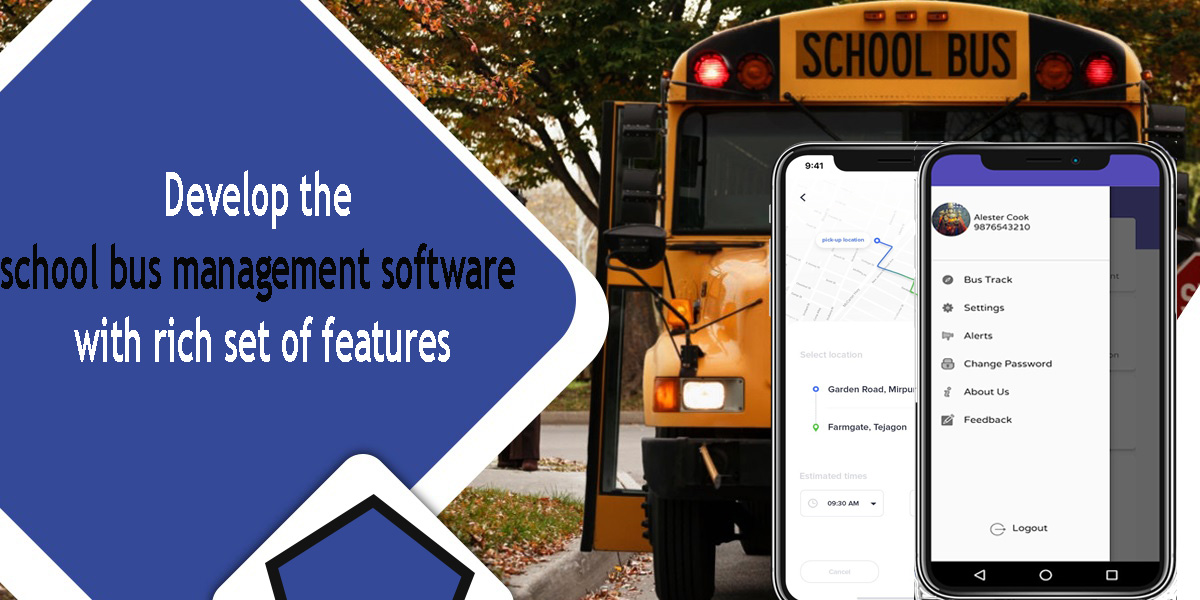In today’s world of increasing demand for private vehicles, developing a transportation management system is the best idea. As we all know, there is a horde of service providers who provide transportation services which throws a tough competition for newbie businesses. However, this blog has come up with a distinct business idea of developing a school bus management software. Seems interesting, right? Here, you will know about the features, workflow of the school transportation app.
Types of school transportation services you can provide with the app
Individual schools
Most of the schools have their mode of transportation for their students. For this, your software will be helpful in multiple ways, right from tracking Bus’ location to managing the overall process.
Multiple schools
Provide school bus transportation for multiple schools. Every school will have a separate dashboard for managing its fleets and vehicles. As an admin, you can look after the admin dashboard’s overall transportation to ensure everything is under control.
Kindergarten schools
Other than schools, you can target the kindergarten and extend your service. As the app comes with several safety features like geolocation, track vehicles, etc., you can offer safe commutation services for kindergarten children.
Now, let us jump into the features that accolade the school bus fleet software that enhances the user experience.
Features stitched in the school bus management software
Estimated arrival time – The parent app has the feature to know the estimated time the school bus would arrive. As soon as the school bus starts, parents can know the estimated time.
GPS Tracking – The real-time tracking will help parents know the location in which the bus is currently traveling.
View status – Parents can check whether their children have been on board or not in the app.
Push notifications – Parents will receive in-app push notifications regarding the commutation of their children. The app will keep parents informed about the status of their arrival and departure.
Activity log – The driver app will have activity logs that record the number of pick-ups and drop-offs carried out by drivers along with timing.
Pick-up log –Whenever a student gets into the bus, it is the drivers’ responsibility to update the same on the driver app.
Drop-off log – Like pick-up logs, drivers must update the drop-off logs whenever a student gets down from the bus or reaches their destination.
Route guidance – Drivers are assisted with maps to reach the destination without any hiccups.
Monitor vehicles – The school administration can monitor the vehicles through the app. Through the in-app GPS, they can keep track of the buses.
Assign trips – The app will automatically assign trips to drivers. In addition, the admin can also assign trips manually.
Vehicle status – The school administration can check the status of the vehicle and upload the same on the app. This is to ensure smooth transportation services.
Voice notifications – Apart from text notifications, the app will send voice notifications to parents.
All the mentioned features of the app will find their importance among the stakeholders. With this, we shall move on to the workflow of the school transportation software.
workflow Process
Step 1: Parents will have to register themselves on the app and enter their children’s details.
Step 2: Similar to users, the school administration will have to enter their details and get registered on the app.
Step 3: Once the vehicle is all set to start, parents will receive the tracking information along with the estimated time of arrival.
Step 4: Drivers will record the details of students for each pick-up and drop-off.
Step 5: Meanwhile, the school administration will keep an eye on the location of the vehicle until it reaches the destination.
Conclusion
In today’s realm, managing transportation services is really hectic. By developing the school bus fleet software, you can provide benefits to users and establish your services.
















